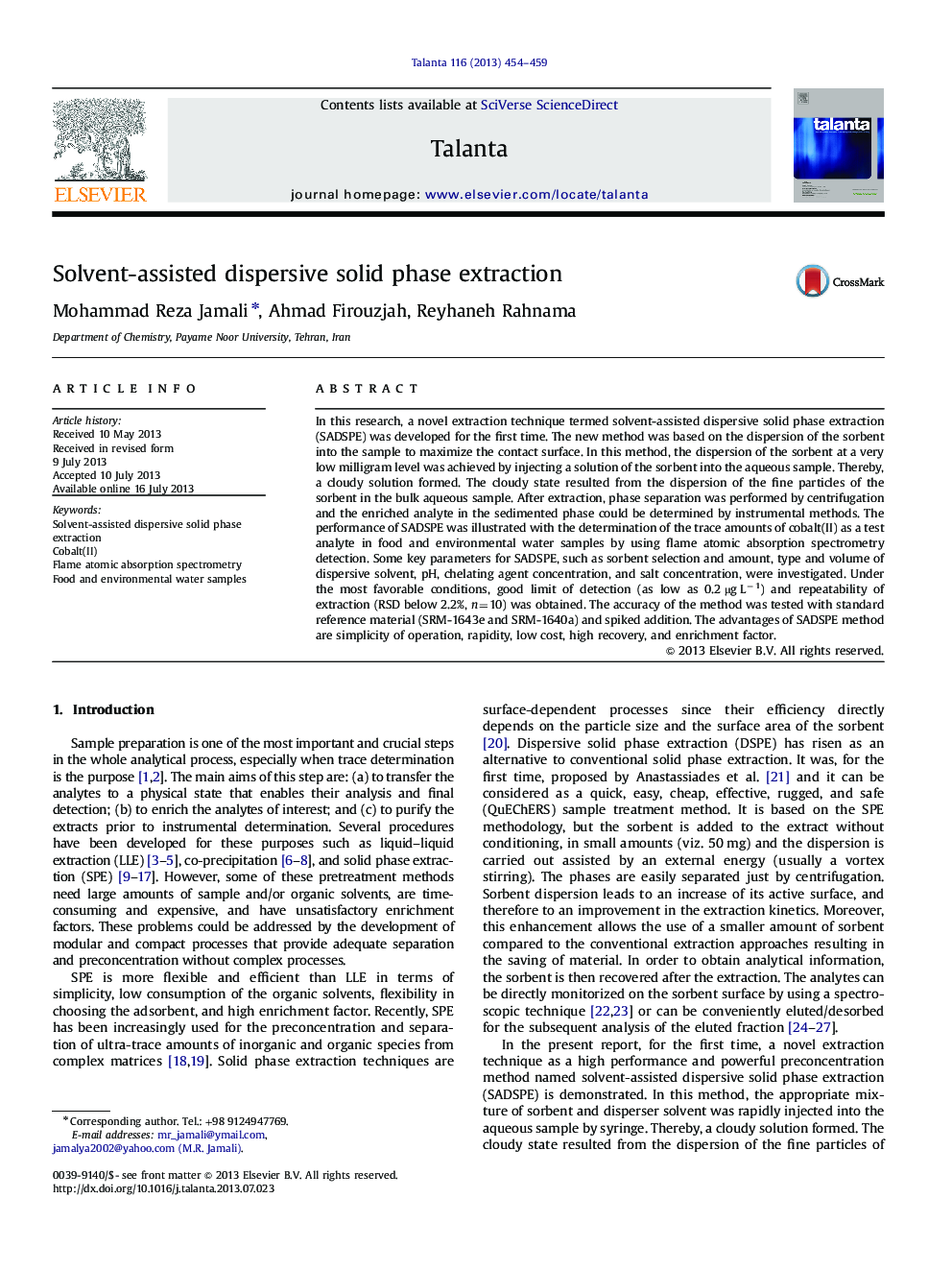| Article ID | Journal | Published Year | Pages | File Type |
|---|---|---|---|---|
| 7682702 | Talanta | 2013 | 6 Pages |
Abstract
In this research, a novel extraction technique termed solvent-assisted dispersive solid phase extraction (SADSPE) was developed for the first time. The new method was based on the dispersion of the sorbent into the sample to maximize the contact surface. In this method, the dispersion of the sorbent at a very low milligram level was achieved by injecting a solution of the sorbent into the aqueous sample. Thereby, a cloudy solution formed. The cloudy state resulted from the dispersion of the fine particles of the sorbent in the bulk aqueous sample. After extraction, phase separation was performed by centrifugation and the enriched analyte in the sedimented phase could be determined by instrumental methods. The performance of SADSPE was illustrated with the determination of the trace amounts of cobalt(II) as a test analyte in food and environmental water samples by using flame atomic absorption spectrometry detection. Some key parameters for SADSPE, such as sorbent selection and amount, type and volume of dispersive solvent, pH, chelating agent concentration, and salt concentration, were investigated. Under the most favorable conditions, good limit of detection (as low as 0.2 µg Lâ1) and repeatability of extraction (RSD below 2.2%, n=10) was obtained. The accuracy of the method was tested with standard reference material (SRM-1643e and SRM-1640a) and spiked addition. The advantages of SADSPE method are simplicity of operation, rapidity, low cost, high recovery, and enrichment factor.
Related Topics
Physical Sciences and Engineering
Chemistry
Analytical Chemistry
Authors
Mohammad Reza Jamali, Ahmad Firouzjah, Reyhaneh Rahnama,
